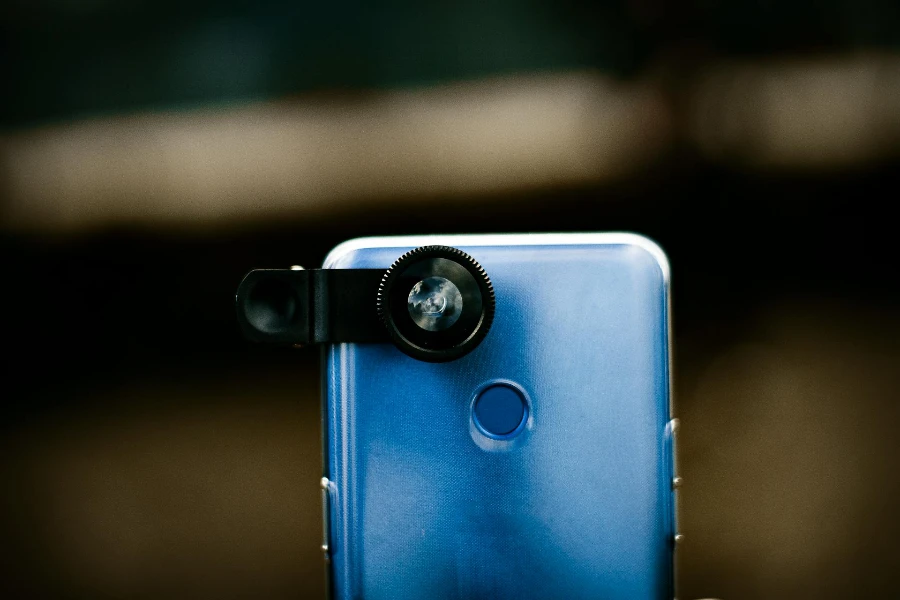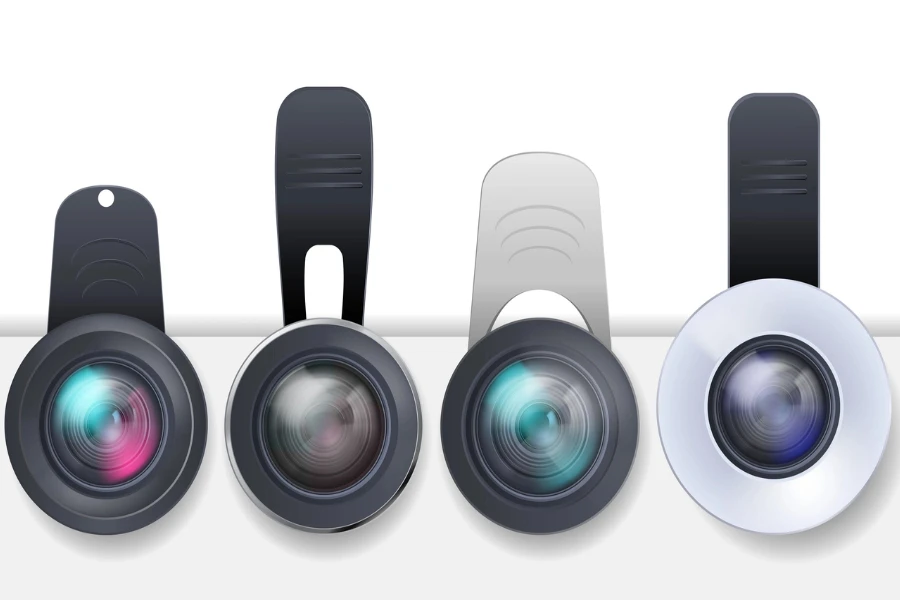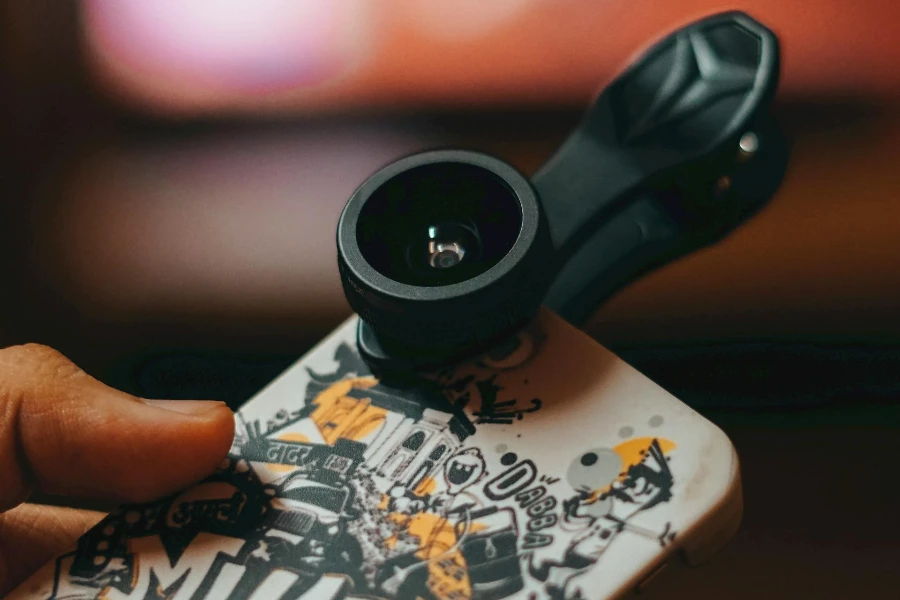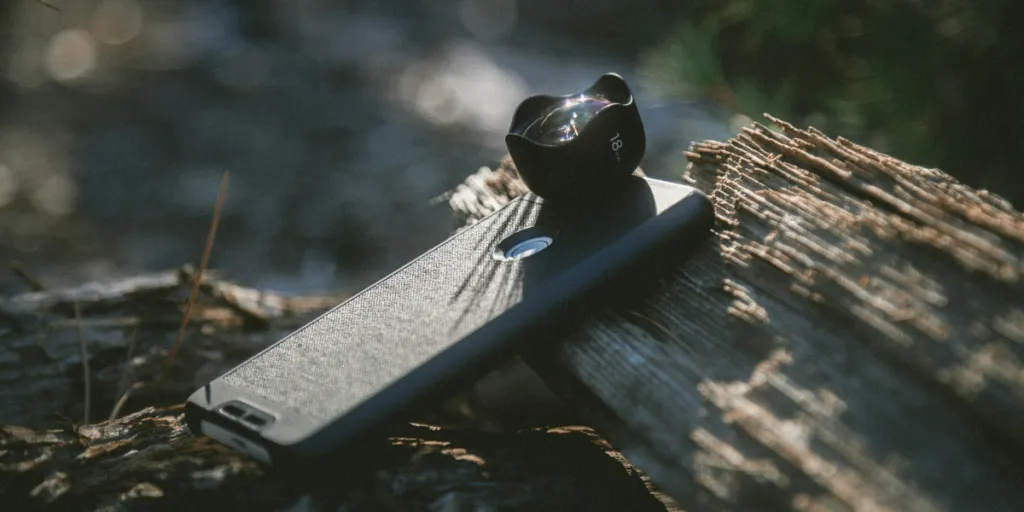While flagship smartphones boast impressive built-in lenses, third-party lenses have carved out their niche in the market. Many photography lovers have found that aftermarket lenses make a significant difference when taking quality photos with their smartphones.
Join us as we unveil the best smartphone camera lenses to transform your device and redefine how you capture the world around you in 2024!
Table of Contents
Market for smartphone camera lenses
What are smartphone camera lenses?
What to consider when purchasing a smartphone camera lens
Are smartphone camera lens kits worth it?
How to select smartphone lenses for capturing video
Final thoughts
Market for smartphone camera lenses
The smartphone camera lens market size is estimated to reach USD 5.01 billion in 2024 and USD 7.43 billion by 2029, growing at a compound annual growth rate (CAGR) of 8.21% during the forecast period.
A study by Counterpoint Research reveals that third-party smartphone camera lens sales witnessed a 10% YoY growth in 2023, emphasizing the growing popularity of these accessories.
Global Smartphone Camera Lens key players include Largan, Sunny Optical, GeniuS Electronic Optical (GSEO), Sekonix, Kantatsu etc. At the same time, the top five manufacturers hold a share of over 80%.
What are smartphone camera lenses?

Third-party smartphone camera lenses are lenses that can be used in conjunction with a person’s smartphone to increase its capability to take quality images.
Aftermarket smartphone camera lenses come in various types, each serving a specific purpose and catering to different photography needs. These lenses are popular among consumers looking to elevate their smartphone photography game.
Wide-angle lens
The limitations of standard smartphone lenses often become apparent when trying to capture expansive landscapes or group shots in tight spaces. A wide-angle lens addresses this issue by offering a broader field of view.
- General use: Expands the field of view, allowing users to capture more in a single frame.
- Best for: Landscape photography, group shots, architecture, and scenarios where a wider perspective is desired.
- Popular choice: Aukey Ora Wide Angle Lens – appreciated for its ease of use and the ability to capture sweeping landscapes or fit more people into group photos.
Tips for product photography
- Perfect for capturing larger products or presenting items in a context.
- Ideal for furniture, clothing, or any product where the overall look and context are essential.
Telephoto lens
For those moments when you need to get up close and personal with a subject without physically moving closer, a telephoto lens is your go-to companion.
- General use: Provides optical zoom, allowing users to capture distant subjects.
- Best for: Wildlife photography, sports events, capturing details from a distance without compromising image quality.
- Popular choice: Moment Telephoto Lens – known for its high-quality optics and ability to bring distant subjects closer without losing clarity.
Macro lens
Imagine exploring the intricate details of a tiny flower or the delicate textures of a butterfly’s wings. Enter the macro lens – a game-changer for those fascinated by the microcosm.
- General use: Enables extreme close-up photography, revealing intricate details of small subjects.
- Best for: Macro photography of flowers, insects, textures, and any scenario where fine details are critical.
- Popular choice: Moment Macro Lens – recognized for its superior optical quality, allowing users to explore the world of tiny details with clarity.
Tips for product photography
- Enables precise focus on specific product features.
- Highlights texture and fine details, showcasing product quality.
- Ideal for capturing small items such as jewelry, electronics, or intricate designs.
Fisheye lens
The fisheye lens is a must-have accessory for adventurous souls seeking a unique perspective.
- General use: Creates a distorted, panoramic effect with an ultra-wide field of view.
- Best for: Creative and artistic photography, capturing unique and distorted perspectives.
- Popular choice: Olloclip 4-in-1 Lens – valued for its combination of fisheye and other lenses, offering versatility in creative smartphone photography.
Tips for product photography
- While more artsy photos aren’t generally ideal for product photography, they could create some interesting images for social media
Low-light lens
One common challenge smartphone photographers face is capturing clear, vibrant images in low-light conditions. With a wider aperture and advanced optical elements, these lenses enhance the light reaching the camera sensor, allowing users to capture stunning shots even in challenging lighting conditions.
- General use: Improves low-light performance by allowing more light into the sensor.
- Best for: Night photography, indoor shots in low-light conditions, capturing clear and vibrant images in challenging lighting scenarios.
- Popular choice: Sandmarc Night Edition Lens – praised for enhancing low-light capabilities and producing high-quality images in dim environments.
What to consider when purchasing a smartphone camera lens

Choosing the best aftermarket smartphone camera lens involves considering various factors to ensure compatibility, functionality, and the ability to meet specific photography needs. Here are vital factors to consider when making your decision:
- Compatibility: Ensure you carry lenses that are compatible with various smartphone models, including Apple and Android.
- Mounting mechanism: Consider the lens attachment mechanism. Most aftermarket lenses use a clip or mount to attach to the smartphone. Ensure the mounting mechanism is secure, easy to use, and doesn’t interfere with the phone’s functionalities (e.g., buttons and ports).
- Lens types and functionality: Understand the different lens types as discussed above so you can recommend the best lens type to customers based on their specific needs. Additionally, ensure that you carry a variety of lens times to meet consumer needs.
- Build quality and materials: Look for lenses made from durable materials, such as high-quality glass or multi-coated optics, to ensure clear and distortion-free images. Consider the durability of the lens housing and any included accessories.
- Optical quality: Check for optical quality and clarity. A high-quality lens should minimize distortion, reduce chromatic aberration, and provide sharp images. Read reviews or look for sample images taken with the lens to assess its performance.
- Size and portability: Aftermarket lenses are often designed to be portable, but some may be more compact or lightweight than others. Opt for a lens that is easy to carry and doesn’t add unnecessary bulk to your smartphone setup.
- Ease of use: Assess how easy it is to attach, detach, and use the lens. A user-friendly design ensures you can quickly switch between lenses and capture the desired shots without hassle.
- Additional Features: Some aftermarket lenses may have additional features, such as anti-reflective coatings, lens hoods, or advanced optical elements. Consider whether these features align with your preferences and shooting conditions.
Are smartphone camera lens kits worth it?

Some consumers opt for a smartphone camera lens kit, but are they worth it?
Camera lens kits and single lenses each come with their own set of advantages and disadvantages. The choice between the two depends on the customers’ specific needs, preferences, and the type of photography they engage in.
Here are the pros and cons of camera lens kits:
Pros
- Versatility: Lens kits typically include multiple lenses (e.g., wide-angle, macro, fisheye), providing versatility for various photography scenarios.
- Cost-effectiveness: Kits are often more cost-effective than purchasing individual lenses. Buying a bundle can save money compared to acquiring each lens separately.
- Adaptability: Lens kits are designed to fit a wide range of smartphone models. They usually come with adjustable mounts or clips, making them adaptable to different devices.
- Comprehensive accessories: Kits often come with additional accessories like lens caps, cleaning tools, and carrying cases, enhancing the overall user experience.
Cons
- Quality variability: Quality may vary between lenses in a kit. While some lenses may perform exceptionally well, others might not meet the same standards.
- Bulkier setup: Carrying multiple lenses makes a setup bulkier than using a single, compact lens.
- Optical performance: Individual lenses within a kit may not achieve the same optical quality as high-end, single lenses designed for specific purposes.

How to select smartphone lenses for capturing video
For those looking to shoot video on their smartphone with an aftermarket camera lens, there are a few additional things to consider:
- Stabilization features: Video recording is sensitive to shaky movements. Look for lenses that incorporate stabilization features, either optical or digital, to help minimize vibrations and ensure smoother video footage.
- Autofocus performance: Fast and accurate autofocus is crucial for video recording. Consider lenses that offer reliable autofocus performance to keep your subjects in focus during video capture.
- Aperture size for low-light performance: A wider aperture allows more light to enter the lens, which can be beneficial in low-light conditions when shooting video. Consider lenses with larger apertures for improved low-light performance in video recording.
- Lens speed and responsiveness: Video often requires quick adjustments to changing scenes. Ensure that the aftermarket lens is responsive and can adapt swiftly to changes in focus or exposure.
- Field of view (FOV) adjustability: Some lenses offer adjustable field of view, allowing you to capture wide-angle or more zoomed-in shots. This flexibility can be beneficial when shooting videos in different scenarios.
- Lens weight and balance: Consider the lens’s weight and how it affects the overall balance of your smartphone setup. Heavy lenses may impact stability and handling, especially when shooting handheld video.
- Lens flare and reflection control: Unwanted lens flares and reflections can be distracting in videos. Look for lenses with coatings or features to reduce flares and maintain video clarity.
- Versatility in shooting modes: Some aftermarket lenses have features specific to video recording, such as cinematic modes or special effects. Assess whether these additional modes align with your video creation needs.
Final thoughts
The smartphone has become an extension of ourselves, capturing the essence of our lives in pixels and bytes. The best smartphone camera lenses empower us to push the boundaries of creativity, unlocking new realms of photographic possibilities. The right lens can transform every smartphone into a powerful imaging tool, ready to capture the magic of every moment.
As the market continues to evolve, with innovations fueled by consumer demand, we can only anticipate the emergence of even more advanced and versatile lenses. To stay on top of the latest tech trends, and to explore a range of photography gear, head to Alibaba.com.




